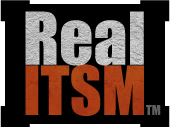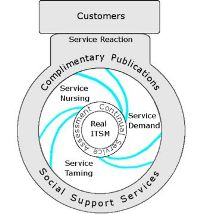|
This site is now retired. It is only a static archive. Some functions may not work any more. Real ITSM DeathcycleReal ITSM services go through a deathcycle from misconception to a usually messy end. Navigating the ITSM Deathcycle can be thought of as akin to navigating the Great Barrier Reef. The intent of Real ITSM is to minimise the number of services that actually go live, while maximising the time and education of staff along the way. In the event that a service does reach the users, the opposite focus prevails: it should be kept alive for as long as possible so as to maximise revenue and job assurance. The intent however is the same – minimisation of change. The Deathcycle is made up of five areas or domains or sections or stages or phases: Service ReactionPlanning and strategy is forbidden. All Real ITSM acts in reaction to business pressures. Service DemandServices are created only in concession to the demands of the customers. Service TamingServices arrive unexpected and unannounced. First priority is to get some control over them. Service NursingOnce stuck with a service, the focus is on keeping it alive as long as possible to maximise revenue. Continual Service AssessmentManagement, consultants and staff are kept happily occupied measuring and assessing the services.
An extract from the official Introduction to Real ITSM
Bookmark this post with:
|














 Made in New Zealand
Made in New Zealand 
Comments
Finally documented
While there are no really new concepts delivered here, it will save my manager time documenting how our IT department works
common nonsense
Oh I hear that all the time: "Real ITSM is just common nonsense written down". it is Real Practice alright. So how many copies will you need for staff training ?
About the "Real ITSM Deathcycle" graphic
I love the "Real ITSM Deathcycle" graphic, but don't toilets flush counter-clockwise in the southern hemisphere? >;->
Sincerely,
Don Milani